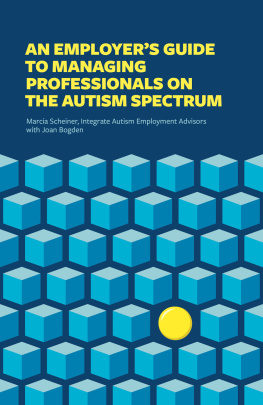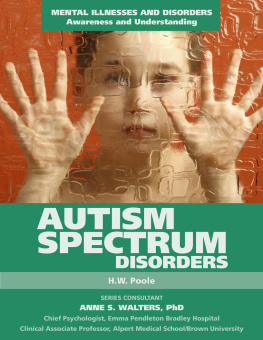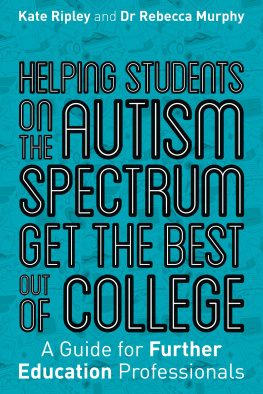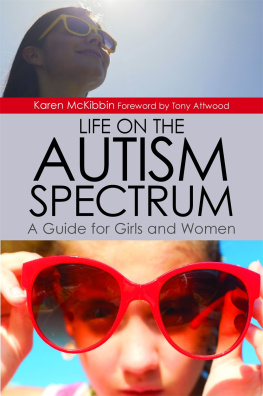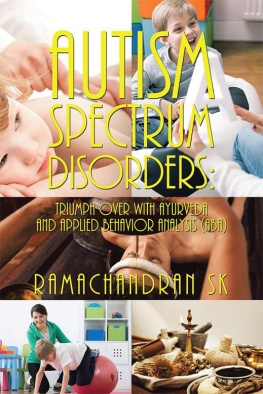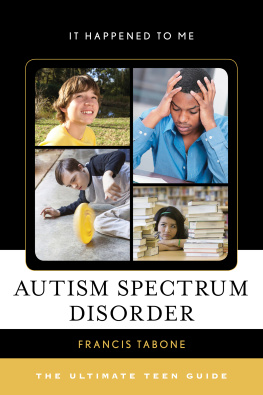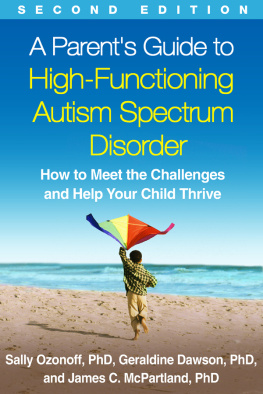
AN EMPLOYERS GUIDE
TO MANAGING
PROFESSIONALS ON
THE AUTISM SPECTRUM
Marcia Scheiner, Integrate Autism Employment Advisors
with Joan Bogden Illustrations by Meron Philo

Jessica Kingsley Publishers
London and Philadelphia
CONTENTS
Part One
INTRODUCTION
Numerous books have been written on the art and science of management. While being a good manager is as much an art as it is a science, when working with individuals who have a neuro-diverse profile, managers need to have a different level of understanding. Most of the managers we meet are busy people who want quick, clear advice on solving problems. They want concrete solutions for specific issues that they can apply in a relatively short period of time.
In this book we have set out to combine the art and science of managing professionals on the autism spectrum with concrete advice for addressing specific situations that may arise in the workplace when managing or working with these individuals. Throughout we provide explanations for what drives the behavioral differences of your colleagues on the autism spectrum. These first three chapters will help increase your understanding of why it is important to be knowledgeable about autism in the workplace.
Chapter 1
GETTING STARTED
Today, 35% of young adults with an autism spectrum diagnosis are attending college. If they can get a college degree, why cant they find a job?
Since the Centers for Disease Control and Prevention (CDC) reported that the incidence rate of autism among children was 1 in 166 in 2000, the scientific community has been debating whether or not the US is suffering from an autism epidemic. The incidence rate of autism has climbed four times since then, to where it rests today at 1 in 68. Epidemic or not, the fact remains that every year thousands of 18-year-olds with autism transition into adulthood with the same hopes and aspirations as their non-autistic (or neuro-typical ) peersemployment, a safe home, and nurturing relationships. Yet today, young adults with autism experience the highest unemployment rates of any group of individuals with disabilities.
In his research, Dr. Paul Shattuck of Drexel University found that two thirds of high school graduates on the autism spectrum have not experienced any form of employment within the first two years out of school. By the time they are in their twenties, only 58% of young adults with autism had some form of paid employment, compared to 74% of young adults with intellectual disabilities, 91% with a speech impairment or emotional disturbance, and 95% with a learning disability.
Overall, however, many college-educated young adults diagnosed with an ASD are not finding employment upon graduation from college or are employed below their level of education. Anecdotal evidence from the autism community suggests that the unemployment rate of college graduates on the autism spectrum may be closer to 7585%. These seemingly contradictory statistics raise two questions. How are over one third of todays young adults with autism able to complete post-secondary education? And if they can get a college degree, why cant they find a job?
To answer these questions, one needs to understand some of the history of autism diagnoses. When first recognized as a brain disorder in 1908, autism was considered a subset of schizophrenia. In 1980, autism was removed as a schizophrenia diagnosis and listed in the Diagnostic and Statistical Manual of Mental Disorders (DSM) as a separate condition. In 1994, Asperger Syndrome was added to the DSM, as an expansion of the definition of autism, to differentiate those individuals who had more advanced language development and normal to superior IQs, but still exhibited some of the other characteristics of autism, including social awkwardness, sensitivity to environmental stimuli (noise, light, and foods), unusual speech patterns, and repetitive behaviors. In 2014, the DSM was updated again, and Asperger Syndrome was folded into a broader definition of autism spectrum disorder and eliminated as a stand-alone diagnosis, although the term Asperger Syndrome is still used by many people to distinguish where on the autism spectrum certain individuals fall. In this book, we mostly use the term autism , but occasionally use Asperger Syndrome , as many of the individuals holding professional-level jobs that we meet still identify with this term.
As the focus on autism as a separate condition from other brain disorders grew during the late 20th century, so did the focus on early diagnosis and intervention. According to the
As children with autism receive greater levels of intervention and support, their ability to achieve higher levels of academic and social success has grown. Dr. Shattucks finding that over one third of 18-year-olds with an ASD go on to college is proof of the success of early intervention and childhood supports. Today, a number of colleges and universities throughout the U.S. have such a significant population of students on the autism spectrum that they have created specialized support programs for their autistic students, separate from their traditional disability services offices. Many even market these programs to the autism community to attract and retain students on the spectrum.
But support for individuals on the autism spectrum who have completed college often stops when they graduate. The U.S. state-based vocational services model has not proven itself adept at finding competitive employment for the computer programmer, journalist, accountant, or graphic designer whose disability is related to his challenges with socialization and communication. Increased support through college, lagging vocational support services, and lack of employer understanding together result in the high unemployment rate among college graduates with autism.
Employers are just beginning to understand that having autism and being a successful professional are not mutually exclusive. It is important for employers who want to access this untapped talent pool to understand that the road to successful employment for college graduates on the autism spectrum is a two-way street. While employers look for candidates who fit into their corporate culture, employers must also provide an environment that guides individuals who are neuro-diverse on how to fit in. Integrate (formerly known as ASTEP, the Asperger Syndrome Training & Employment Partnership Inc.) was founded in 2010 to work with employers to change this dynamic for professionals on the autism spectrum. We see this as the logical next step in supporting such individuals so that they can be successful job seekers and employees.
This book is meant to provide you (as a manager, mentor, co-worker or HR professional) with concrete tools to understand and help guide your colleagues on the spectrum through the daily challenges they may experience on the job. Although this book focuses primarily on the challenges that may arise in the workplace when an employee has an autism spectrum disorder, these individuals prove to be loyal, honest, hardworking, focused, intelligent, accurate, logical, and productive. For every challenging characteristic of being on the spectrum, one can find a positive use of that trait over a wide range of jobs. For example, what employer wouldnt want a risk manager who is exceptionally honest, a financial analyst who is obsessed with accuracy, a computer programmer who is laser-focused, or a graphic designer who is unconcerned with prior convention? And above all, who wouldnt want an employee who is grateful for an opportunity to have meaningful, competitive employment in an environment where they know they can be themselves and have their work valued?
Next page
